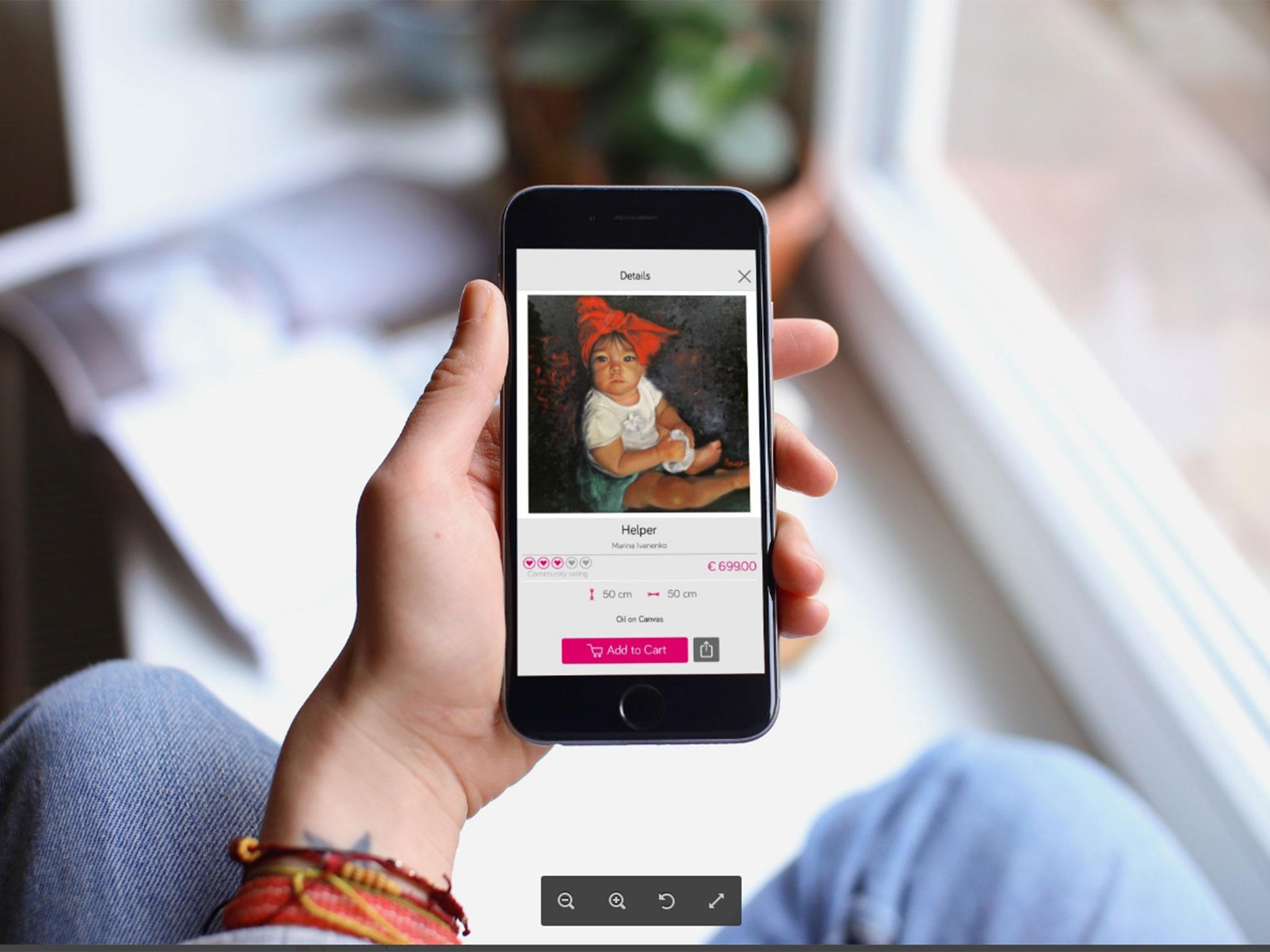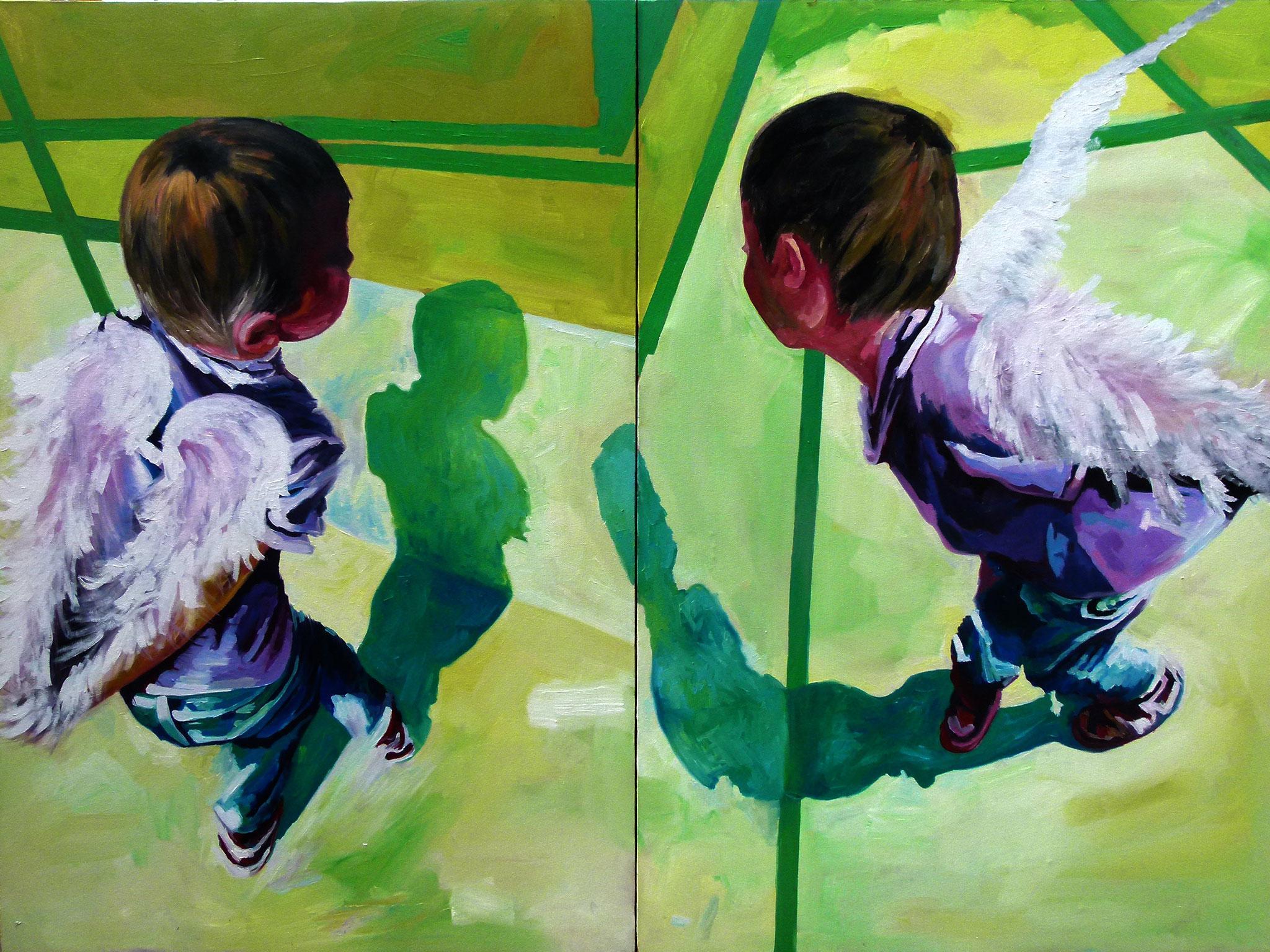Wydr: How the Tinder for artists and buyers could turn the art industry upside down
With its Tinder-style swip model and lack of curation, could Wydr change the art industry?

Your support helps us to tell the story
From reproductive rights to climate change to Big Tech, The Independent is on the ground when the story is developing. Whether it's investigating the financials of Elon Musk's pro-Trump PAC or producing our latest documentary, 'The A Word', which shines a light on the American women fighting for reproductive rights, we know how important it is to parse out the facts from the messaging.
At such a critical moment in US history, we need reporters on the ground. Your donation allows us to keep sending journalists to speak to both sides of the story.
The Independent is trusted by Americans across the entire political spectrum. And unlike many other quality news outlets, we choose not to lock Americans out of our reporting and analysis with paywalls. We believe quality journalism should be available to everyone, paid for by those who can afford it.
Your support makes all the difference.Swipe left to reject. Swipe right and pray for a match. Repeat until your grubby needs are satisfied. This is the formula for a match on Tinder, the dating app we can thank for making finding a partner - be it for a night or for life - gloriously shallow. And if that’s how we now approach something arguably as important as scoring companionship (and the sweatier stuff) then it was only a matter of time before a start-up used the model for artists pimp themselves. It’s called Wydr, and its makers believe it will democratise art by making galleries obsolete. To them, such hallowed spaces only intimidate potential customers; they’re expensive to keep; and their scene is difficult to infiltrate.
First launched in Switzerland at the start of the year, Wydr has recently gone global, attracting 1,000 artists peddling a total of around 3,000 pieces, and more than 25,000 people are allegedly already signed up to the app (although how many are parting with their cash is another matter). But just the other day, says co-founder Timo Hahn, paintings were sent from Norway to Mexico, Switzerland to Hong Kong, and Turkey to the US.
Hahn and fellow founder Matthias Dörner conceived Wydr at business school. To make it profitable, they add 30 per cent to the artist’s asking price before it is listed and take a commission on every transaction. Both have their fingers in various art-scene pies, and Hahn collects works from independent galleries while travelling abroad. (No fear factor for him, then.)
Adopting Tinder’s swipe model, Wydr’s algorithm works behind the scenes, assessing users’ tastes to calculate what to display in the future. However, as the buyers are in control, the balance of power is shifted here from Tinder’s model, which requires both parties to “match”. Artists on Wydr must catch the eye of potential customers flicking through their tiny phone screens. And herein lies a problem. Sure, Wydr’s interface is clear and simple enough to use. But the work – much of which is abstract or indebted to Pop – is difficult to engage with on a smartphone, and wide landscape pieces take up less than a third of the screen. With the work confined to hand-held devices, artists are at the mercy of the quality of the user’s screen – which could be old, or cracked, or both. And browsers must move to a desktop to take a closer look at their favourite pieces – which is already beginning to sound like a chore.

Still, the pair speak about their project in grand terms. They say Wydr makes art accessible to everybody. They say it is for the 99 per cent, not the one. “Most people are tired of generic posters from furniture stores and the intimidating way that you are treated in classic galleries with only a little money in your pockets,” says Hahn. “Wydr is an open platform. We're not playing the curator to tell you ‘good enough, not good enough’. In the end, art is what you like.”
Among the artists taking a punt on Wydr is Mark Bern, a self-described “pixel artist” and entrepreneur who splits his time between Zurich and Berlin. His favourite things about the app? It’s a source of inspiration. His least favourite? That he hasn’t sold any work yet. As for his own art collection, the 37-year-old usually buys art in a few selected galleries – both on and offline and enjoys the broad choice offered by the internet.

As for buyers, the Wydr boys provide one, called Reto, an art fan who read about Wydr in the Swiss newspaper Blick. Says the 38-year-old businessman: “I am not the type of person who visits art galleries. I just bought paintings at Ikea – but knowing that thousands of other have the same painting at their home somehow bothered me.”
He compares Wydr and the art market to the wine industry. “I like to swipe, to like or dislike a painting and compare it with the overall rating. It's interesting to see that expensive pictures don’t necessarily get a good rating and vice versa. Eventually taste is subjective. A platform like Wydr allows a crowd rating where underdogs can advance to superstars and vice versa. It's taking away the power of self-defined experts, or dictators. And it’s fun.”
So will Wydr transform the art industry, which last year generated worldwide sales of $63.8bn (£48.6bn)?
Unfortunately it’s a resounding “no” from Susan Mumford, the founder of the consultancy Be Smart About Art, and just the type of expert that the app seems to dislike so much.
Some people want to be dictated to, otherwise galleries simply wouldn’t exist, says Mumford. Still, she says, technology on a wider scale does have a lot to offer artists as a means of selling and showcasing work; and there is certainly a growing appetite for buying art online. But to succeed, Wydr must compete with existing auction sites such as Saatchi Art and artnet.com, launched almost a decade ago, as well as more recent triumphs such as Artsy, ArtSpace, and ArtFinder. By curating works, such sites cost work appropriately and help buyers spend wisely, explains Mumford.
Jennifer Kaya Moran, a former gallerist who works at a tech start-up, is more blunt: “Showcasing artworks using a swipe mechanism, with no context and no barriers to entry, relegates an otherwise high class experience to a mystery grab-bag, one most likely filled with a lot of garbage.”

London-based photographer Lloyd Ramos isn’t quite convinced, either. Wydr is suitable for selling “fun” images that work well on Instagram, he says. But it seems it’s not destined for the big leagues.
“Much like Tinder it's just a quick way to appraise art based on that initial wow factor. I think the transformative, view-challenging nature of art gets lost somewhat. Instead of approaching a piece on a gallery wall with 'why?' in mind, Wydr simply frames a piece in a yes/no binary.” Nonetheless, he adds, “Not every piece of art has to challenge conceptions. Sometimes it's nice to just let go of any intellectual baggage and react on initial impressions.”
Hahn and Dörner brush off the criticism. “If you really want to change something and not simply copy other ideas, you encounter a lot of resistance.” Alluding to the success of Uber and Air Bnb, Hahn teases: “A few years back, who would have gotten into a strangers car that doesn't have a ‘Taxi’ sign on it? Or lived at somebody else's home for a few days, in a foreign city without knowing them?”
Pesky experts cast aside, the duo are now at the mercy of the buyers.
Join our commenting forum
Join thought-provoking conversations, follow other Independent readers and see their replies
Comments